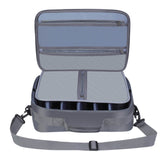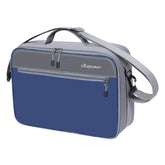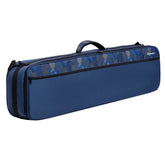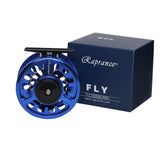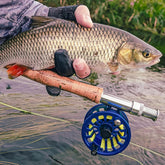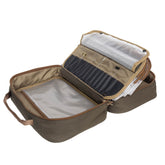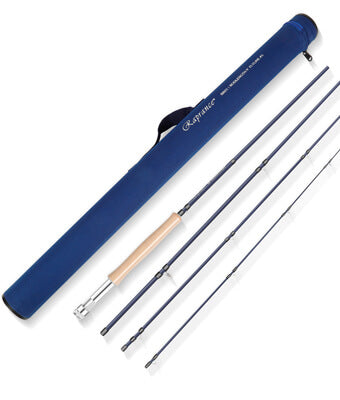Fishing Net: Choosing the Best Rubber, Knotless, Wooden Handle, and Aluminum Landing Nets
When it comes to landing fish efficiently, choosing the right fishing net is crucial. A rubber mesh fishing landing net is an excellent option for catch-and-release practices, as it minimizes harm to the fish while ensuring stability during the retrieval process. My experience has shown that a knotless fishing landing net significantly reduces the risk of snagging lines or damaging delicate fish scales.

I often turn to wooden handle fishing landing nets for their durability and classic aesthetic. They provide a strong grip and a touch of elegance to my fishing gear. In contrast, aluminum fishing landing nets are lightweight and rust-resistant, making them ideal for extended fishing trips. Each type of net offers different benefits, allowing anglers to choose based on their personal preferences and fishing styles.
For those exploring options on platforms like the AliExpress app, the variety available in nets can be overwhelming. I find that comparing materials and features, such as rubber mesh versus traditional nets, helps me make informed decisions. Selecting the right landing net can enhance my fishing experience and improve my success on the water.
Types of Fishing Landing Nets

When selecting a fishing landing net, specific types cater to different needs and preferences. I will focus on rubber mesh fishing landing nets and knotless fishing landing nets, highlighting their features and benefits.
Rubber Mesh Fishing Landing Nets
Rubber mesh fishing landing nets are known for their durability and gentleness on fish. The clear rubber netting minimizes fish injury and reduces the chance of tearing their protective slime coating. This feature is especially important when practicing catch-and-release fishing.
These nets are also resistant to tangling, making it easier to retrieve the fish without hassle. Additionally, the non-absorbent material prevents odors and bacteria from building up over time. Overall, rubber landing nets offer a balance of functionality and fish care that is ideal for various fishing styles, including fly fishing.
Knotless Fishing Landing Nets
Knotless fishing landing nets feature a smooth netting design that prevents snagging on fish fins and hooks. This design reduces stress on the fish while making it easier to maneuver during landing.
Knotless nets also tend to be more durable, as they avoid weak points that can occur at knot junctions. For anglers, this means less time worrying about equipment failure during critical moments. The seamless structure is beneficial in both freshwater and saltwater environments, providing versatility for any fishing trip.
Handle Materials and Designs

When choosing a fishing landing net, the handle is an essential component that impacts usability and comfort. I focus on two primary materials for handles: wood and aluminum. Each offers distinct advantages and design features influencing the overall fishing experience.
Wooden Handle Fishing Landing Nets
A wooden handle brings a classic feel to fishing while offering natural durability. The wood provides a strong grip, even when wet, which enhances control during use. I appreciate the aesthetic appeal of wood, making it more visually pleasing to some anglers.
Wooden handles can vary in thickness and shape, which impacts comfort. A well-designed ergonomic grip reduces hand fatigue during extended fishing sessions. Furthermore, I find that wooden handles are typically heavier, influencing the net's balance. They may not offer the lightweight advantage of other materials, but their sturdiness often compensates for this.
Aluminum Fishing Landing Nets
Aluminum handles are a popular choice for those seeking lightweight designs. The reduced weight allows for easier handling, especially during long fishing trips. I prefer the telescopic options that aluminum nets offer; they provide adjustable lengths to suit various fishing scenarios.
Durability is another key advantage of aluminum. This material resists corrosion and bending, ensuring longevity in different water conditions. I value the grips on aluminum handles as they can be designed to provide comfort and prevent slipping. Overall, I find that aluminum handles combine functionality with ease of use, making them a versatile choice for anglers.
Additional Considerations
When selecting a fishing landing net, I consider several key factors that can enhance my fishing experience. The choice between telescopic and fixed handles can impact usability, while the netting material plays a crucial role in catch-and-release practices.
Telescopic vs Fixed Handles
The handle type impacts both convenience and comfort. Telescopic handles can extend and retract, allowing me to adjust the length as needed. This feature works well in various fishing environments, especially when navigating through tight spaces or when fishing from a boat.
In contrast, fixed handles provide sturdiness and less chance of wear over time. They are typically made from durable materials like wood or aluminum. I prefer these for durability, especially in choppy waters, where a stable net is essential. My preference often leans toward how each handle feels in my hand and how easily it can be maneuvered.
Netting Material and Catch & Release
The material of the netting significantly influences my fishing practices. Clear rubber netting is my top choice because it minimizes damage to fish scales and fins, making it ideal for catch-and-release fishing.
Rubber landing nets are beneficial as they are lightweight and resistant to snagging. They also dry quickly, reducing the risk of bacteria buildup. I avoid traditional mesh nets because they can harm fish during handling.
The choice of netting directly affects my success in returning fish to the water safely and ethically. Prioritizing the right materials ensures that I can enjoy fishing while supporting conservation efforts.

